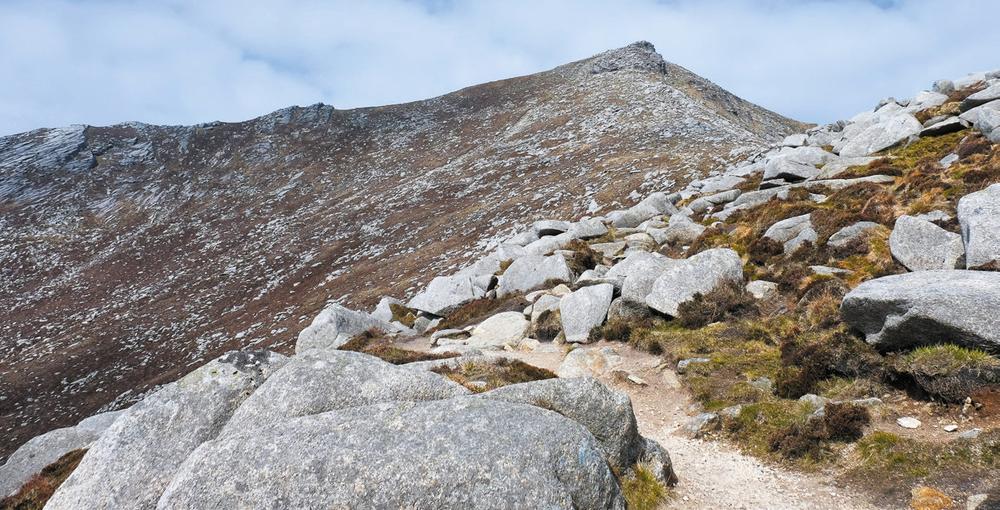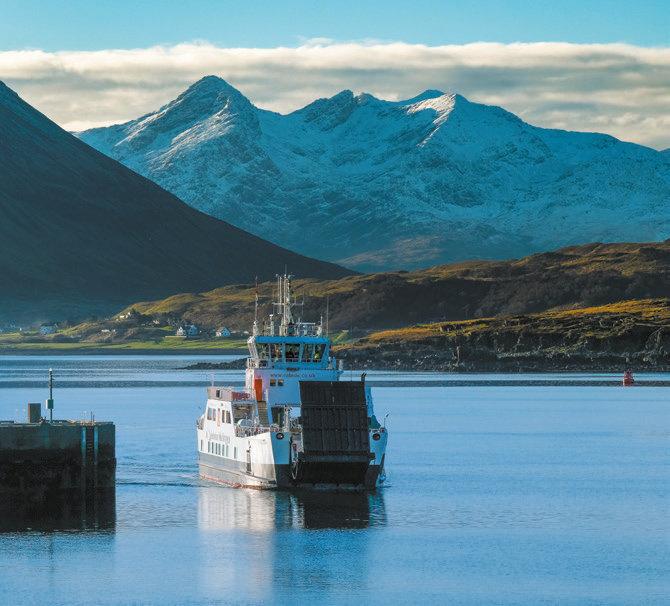There’s an indefinable magic about islands. Even otherwise ordinary places are transformed by a feeling of otherness when you have to cross the sea to reach them. Islands are places apart, away from the commonplace, places where we leave our normal lives behind. Just think of the words we commonly associate with them: island escape, island adventure, treasure island, island paradise.
And nowhere is this truer than with the islands of Scotland. They possess some of the finest mountain and maritime landscapes in Europe. The variety in such a compact area is immense, from the fertile fields of Orkney to the barren peatlands of Lewis, from the sandy beaches of Tiree to the Cuillin of Skye, the most alpine mountains in Britain. There are endless layers of human history to uncover too: the remarkably preserved Stone Age settlements of Skara Brae or Jarlshof, the long era of Norse rule, the richness of Gaelic culture, the human tragedy of the Clearances. Then there’s the natural history: dolphins, whales, otters and some of the most spectacular seabird colonies to be found anywhere in the world.
Many people start with a visit to one of the better-known islands – Skye, Arran, or perhaps Mull; all make for experiences to remember. Once you’ve been to one island, the mind begins to wonder what the neighbouring islands are like – and what about the ones beyond them? All are different. If you enjoy taking trips, exploring and discovering different islands for yourself – and who wouldn’t? – then you’re an island bagger.
Island bagging is as addictive as Munro bagging, but it’s far less precisely defined. There is no official list of islands, nor are there any rules as to what it means to bag one – so where does this book fit in?
What is an island?
The dictionary definition of an island is ‘a piece of land surrounded by water’. That sounds very simple – too simple. What if it’s surrounded by water only when the tide is out? What if there’s a bridge? How large does it needed to be? Does a skerry or a sea stack count?
In his lavish book on Scotland’s islands, beautifully illustrated with his own paintings, Hamish Haswell-Smith defines an island as:
a piece of land or group of pieces of land which is entirely surrounded by seawater at Lowest Astronomical Tide and to which there is no permanent means of dry access.
He then further restricts himself to islands of forty hectares of more. Hamish is a yachtsman, with a passion for exploration by sea, and his book is a classic guide for those with their own boat.
Most of us, though, don’t own a yacht – or even a sea kayak. We therefore focus on the islands to which it is possible to catch a ferry – or at least realistically book on to a boat trip – to make a visit. We still regard Skye and Seil as islands, despite their having bridges. We regard walking over the sands to visit a tidal island as being an unmissable adventure in itself. We’re landlubbers by nature, but ones who feel the irresistible draw of the isles. We want to experience the islands in all the best ways we can.
If this sounds like you, then this is your book. Rather than restricting ourselves to strict definitions, we’ve focused on the ninety-nine islands that have regular trips or means of access for visitors, and have described our picks of the best ways to experience each of them. This book also features fifty-five other islands which have no regular transport but are still of significant size or interest.
How do you ‘bag’ an island?
Even if you are happy with whether something is an island, the question remains: what does it take to ‘bag’ it? Most people would say you have to at least visit it, but if you simply tag the island and leave, have you really experienced it? In 2007, Andy Strangeway announced he had ‘bagged’ all Scotland’s islands by sleeping on them overnight.
What makes each island special? There is no one answer, and so we reckon there is no one correct way to bag an island. You might just visit it or stay overnight; you could climb its highest hill or circumnavigate its coastline. You could uncover its history, sample the local island produce or take part in a community event. Which island experience you choose is entirely up to you.
Practical matters
Every island we have included features a brief introduction, and information on how to access it if it can be done without your own boat. We then describe our choices of experiences to get the most from a visit to that island.
Note that most of Scotland’s islands are relatively remote and undeveloped places. There are few formal footpaths, and the walks described include only brief details – most cross rugged terrain, a long way from help. Only a few islands have mountain rescue teams. Always ensure you carry an Ordnance Survey map and a compass, and that the walk you are attempting is within your experience and abilities. If you are heading to a tidal island make sure you have studied the tide times and allow plenty of time to return safely. If you are unsure of what you are doing or where you are going, consider hiring a guide.

Colonsay, Carnan Eoin

Mull, white-tailed eagle

Mainland Shetland, Up Helly Aa

Mainland Orkney, Ring of Brodgar
The islands featured that do not have regular boat services are for information only; these may be accessible by your own boat or kayak but this is outside the scope of this book – the waters around Scotland’s islands are amongst the most challenging in the world.
A word of warning
After climbing their first few Munros, many hillwalkers find Munro bagging addictive, even if they try to resist. As they advance it can become all-consuming, taking up all their free time and dominating their thoughts. But at least Munro bagging has an end point, when that final summit is reached.
Island bagging, on the other hand, may be more dangerous. You may get a passion for it. You might even visit and experience something on every single one of the main ninety-nine islands with ferries, bridges, tidal causeways and boats as featured in this book. You might get a kayak or charter a boat to visit the other islands listed. You may work your way through all the islands listed by Haswell-Smith, or other longer lists. But whatever you do, there will be always be more islands to visit, more skerries, islets, rocks and stacks to discover. You might eventually find yourself trying to land and climb one of St Kilda’s towering sea stacks, or something even harder.

Arran, Goatfell

Skye, from the Raasay ferry terminal

Islay, Carraig Fhada
Once you’ve started, there is no cure for Scottish island bagging. You have been warned.
Bag your islands on Walkhighlands
Sign up as a registered user on Walkhighlands and log which islands you’ve visited. Head to www.walkhighlands.co.uk to get started.
Key
![]() Activity
Activity
![]() Beach
Beach
![]() Food and drink
Food and drink
![]() History and culture
History and culture
![]() Nature and natural features
Nature and natural features
![]() Walk
Walk